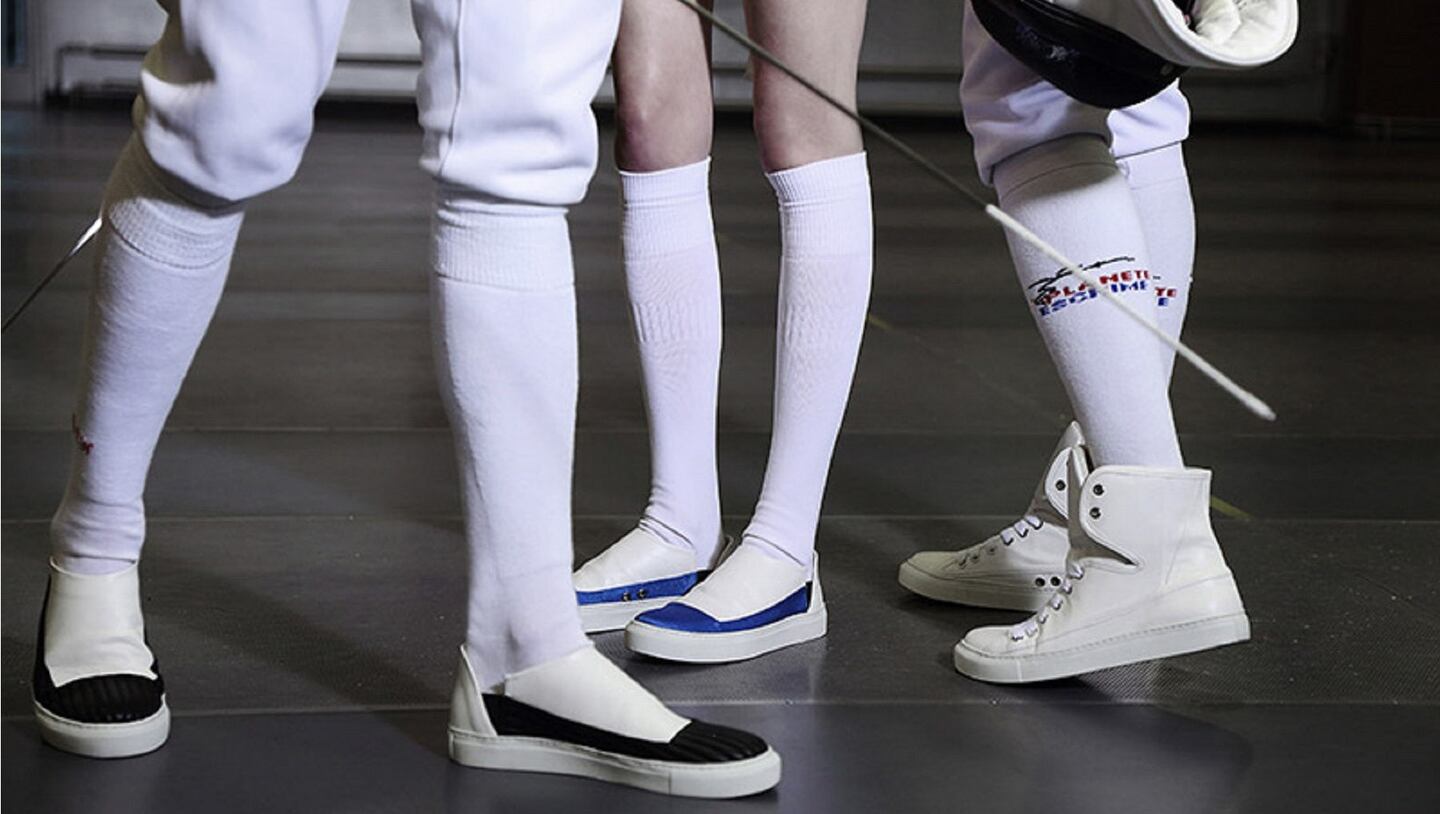
The Business of Fashion
Agenda-setting intelligence, analysis and advice for the global fashion community.

Agenda-setting intelligence, analysis and advice for the global fashion community.

PARIS, France — Coconut, fig, potato starch, pineapple. These are a few of the natural fibres that Mats Rombaut has used to manufacture his vegan shoes, which, despite the use of such unconventional materials, has won the support of influential department stores and boutiques worldwide. In its first season, stockists of the street-wear inflected line, which prices its slip-ons at $289 and sneakers at above $500, include Comme des Garçons in Tokyo, Layers in London and Saks Fifth Avenue in Kazakhstan.
Although the 28-year-old designer has no formal training in footwear manufacturing or design, Rombaut hails from a long line of shoemakers. Both his father and grandfather made clogs in his native Belgium. Bucking this family trend, in 2006, Rombaut left his hometown of Ghent to study economics at Universitat Autonoma de Barcelona. After a few months, however, he shifted course, moving to Paris and taking up an internship at fashion PR agency Totem. "I was drawn to Totem because they represented a lot of Belgian designers like Raf Simons, Veronique Branquinho and Bernard Willhelm," he said.
In 2008, Rombaut joined the men’s accessories department at Lanvin, before moving to Damir Doma, where he worked on product development and production for two years. “At Lanvin, I worked on sneakers around 2008, just as the boom in Lanvin sneakers emerged. It was during that time when I realised that I wanted to specialise in footwear rather than bags or other products,” said Rombaut. He was also motivated to start his own line because he could not find desirable product compatible with his vegan lifestyle. “As a vegan, I couldn’t find nice shoes that were made out of alternative materials other than leather."
Rombaut debuted his men's footwear collection in January 2013, adding a women's range during the Spring/Summer 2014 Paris shows. Today, Rombaut manufactures his line in Portugal, predominately using organic cotton with a light rubber coating, cork and natural rubber for the soles and various plant-based components — all of which are sourced through fabric fairs and on the Internet. Although the shoes are constructed in Portugal, the final product is hand-finished in Paris by the designer and his assistant.
ADVERTISEMENT
In 2013, for his collaboration with Belgian fashion designer Bruno Pieters, Rombaut took on the challenge of making a 100 percent plant-based shoe, using biodegradable fig tree bark from Uganda and combining it with organic cotton lining and potato starch shoe laces. "Fig tree bark has been used for clothing and adornment for hundreds of years in Uganda," said the designer. To create a fabric bark is stripped from a tree and beaten flat with a mallet, in order to create a soft, fine material. This fabric upper is then coated in natural latex and dyed using vegetable pigments.
Although Rombaut works with many natural fibres, he does not do so exclusively. He also uses some synthetic materials — “because they are necessary to improve the durability of the shoes” — but faces the challenge of changing consumer perception about synthetics. “At the end of the day, consumers think that leather is a luxury and anything that is non-leather is inferior. Unfortunately, in fashion, that’s still the main thing.”
In addition to its eco-conscious approach, Rombaut’s line is notable for its unisex designs. “It was a natural outcome. Particularly for shoe categories like sneakers, there is not such a big distinction between men’s and women’s,” he explained. However, the designer does not see unisex as a core part of his brand’s DNA. “I would say that a big part of the Rombaut DNA is discipline. It’s a quality that is very present in gymnastics and fencing — [that is] the inspiration for my Spring/Summer and Autumn/Winter 2015 collections. The discipline of training and making yourself better, making your body better, making your mind better — all of that fascinates me.”
For this month’s spotlight, the custom BoF logo features one of Rombaut’s cotton-panelled high-top sneakers.

Source: Rombaut for BoF
Looking to the future, Rombaut continues to expand his distribution network. For Autumn/Winter 2015, the business has taken on a number of new stockists, including Addition Adelaide in Tokyo, L’Eclaireur in Paris, 4 in Kuwait, Coccodrillo in Antwerp and Harvey Nichols in Hong Kong. The designer is also planning to introduce lower-priced models to his range “so younger customers can also enjoy my shoes.”
The fashion industry continues to advance voluntary and unlikely solutions to its plastic problem. Only higher prices will flip the script, writes Kenneth P. Pucker.
The outerwear company is set to start selling wetsuits made in part by harvesting materials from old ones.
Companies like Hermès, Kering and LVMH say they have spent millions to ensure they are sourcing crocodile and snakeskin leathers responsibly. But critics say incidents like the recent smuggling conviction of designer Nancy Gonzalez show loopholes persist despite tightening controls.
Europe’s Parliament has signed off rules that will make brands more accountable for what happens in their supply chains, ban products made with forced labour and set new environmental standards for the design and disposal of products.